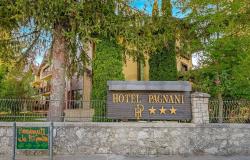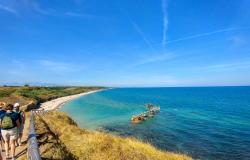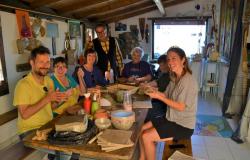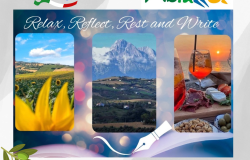Up among the wild, forbidding peaks of the Gran Sasso National Park, in Abruzzo, stands a medieval village of cobbled lanes, sun-flooded squares and ancient stone houses. Courtyards and patios, porticoes and alleys, chimneys and carved stone doorways shelter behind thick walls, protected by a slender tower and surrounded by the green embrace of terraced fields. It is Santo Stefano di Sessanio, in the Abruzzo, a fortified borgo that was once a Medici stronghold.
And, until a few years ago, it was little more than a wreck.
Over the centuries, this once prosperous village lost its riches and many of its people, becoming a ghost of its former self. Abandoned, the old stone houses quickly turned into ruins—until a passionate Swedish-Italian entrepreneur, Daniele Elow Kihlgren, chanced upon the place one day and decided to launch a restoration project that would bring Santo Stefano back to its Medici splendour.
His restoration company, Sextantio, bought more than 3,500 square metres of homes and set out to rescue and preserve the village. The plan was to repair and renovate the houses and turn them into an Albergo Diffuso—an extended hotel with guestrooms scattered around the village.
But this wasn’t your average development project—at Santo Stefano, historical accuracy was top of the agenda. The work was preceded by a lengthy research to understand and study the vernacular style of the area, so that it could be recreated—using reclaimed materials—in those buildings where years of abandonment had obliterated it.
Architects studied the original purpose for every single room in every single house through photographic archives and on-site interviews with the local elderly, so that each renovated home would, wherever possible, remain true to its authentic blueprint.
This care for conservative detail extended to the décor—a joint project with a local museum identified traditional home-decorating styles, and austere Abruzzese mountain furniture was sourced to replicate the houses’ original look, from stone fireplaces down to wool mattresses and handwoven bedsheets.
But this painstaking approach to conservation—and the ensuing sense of stepping into an atmospheric time warp—isn’t limited to the guestrooms. It pervades the village’s alleys, lanes and squares. Streetlights look like ancient oil lamps, the restaurant serves robust Abruzzese cuisine from locally sourced ingredients, and artisans make jewellery, ceramics and woven fabrics in traditional workshops.
People can simply book a room via Sextantio’s online reservation service, head to Santo Stefano, which is about an hour and twenty minutes’ drive from Pescara international airport, and dream of living in turn-of-the-century Italy for a weekend. Those who are hungry for more, can also buy one of the ancient village houses there through developers Realitalia. For more information, or to book a room, visit www.sextantio.it.









